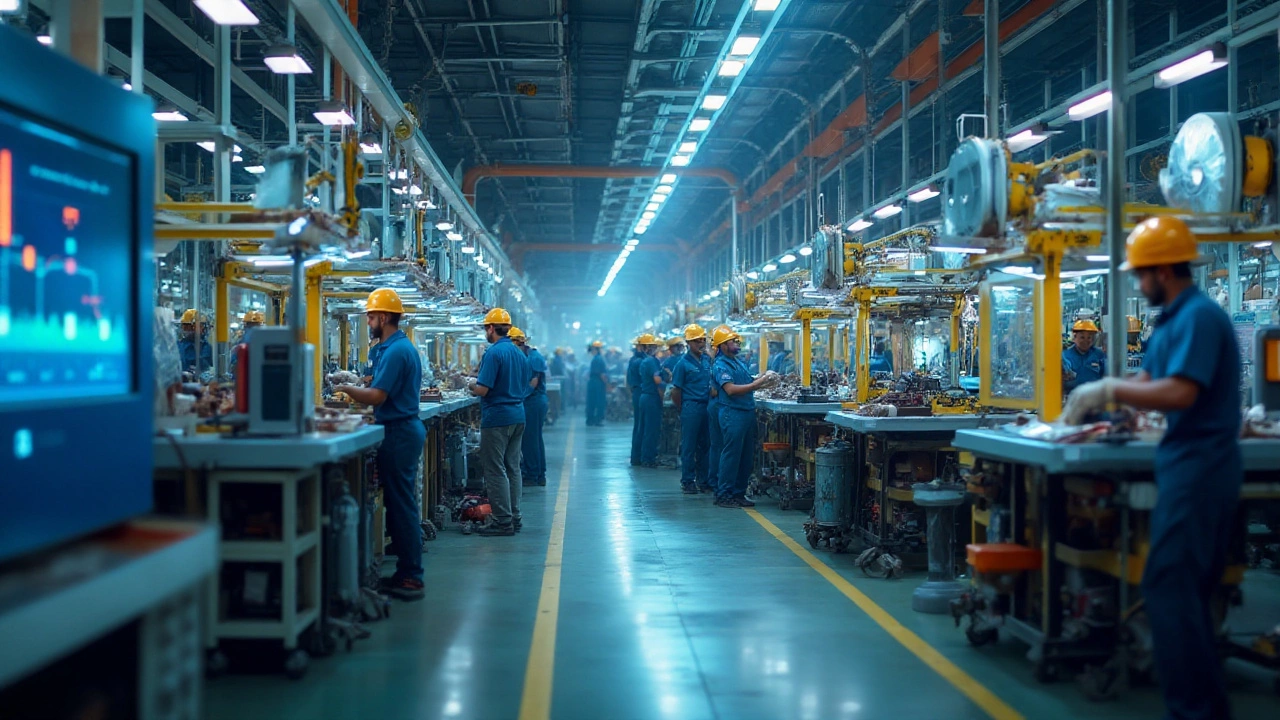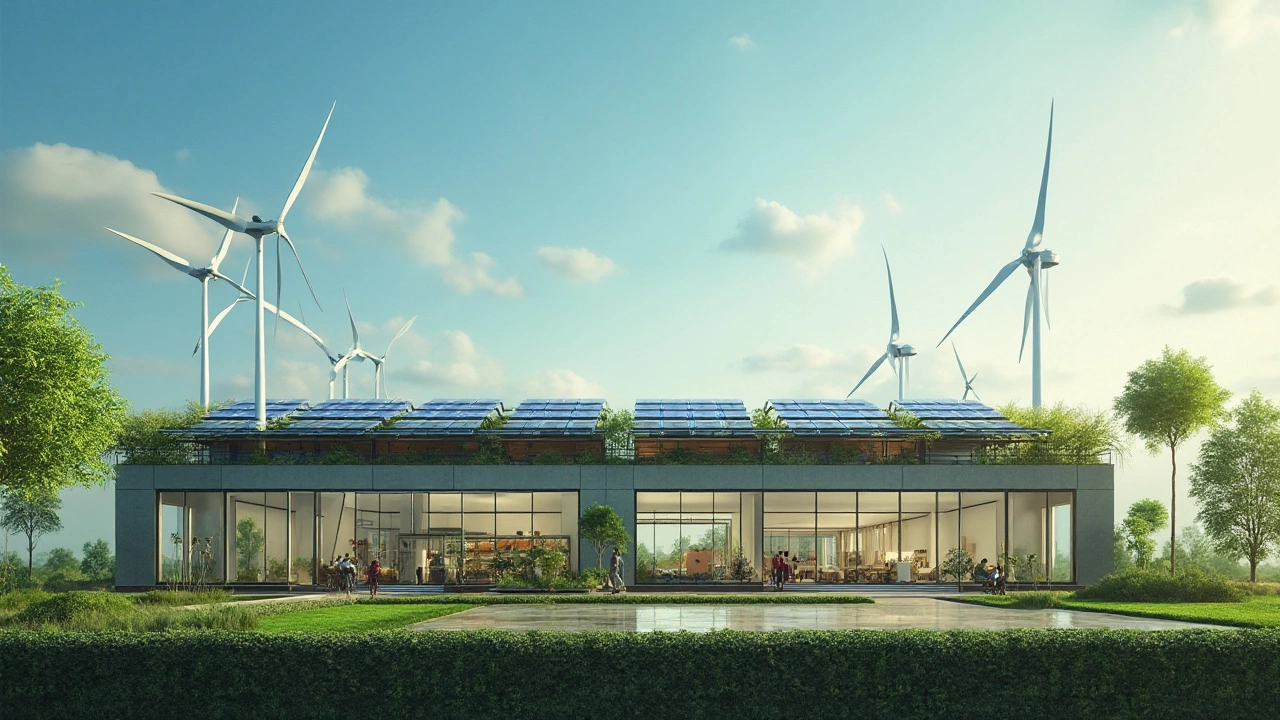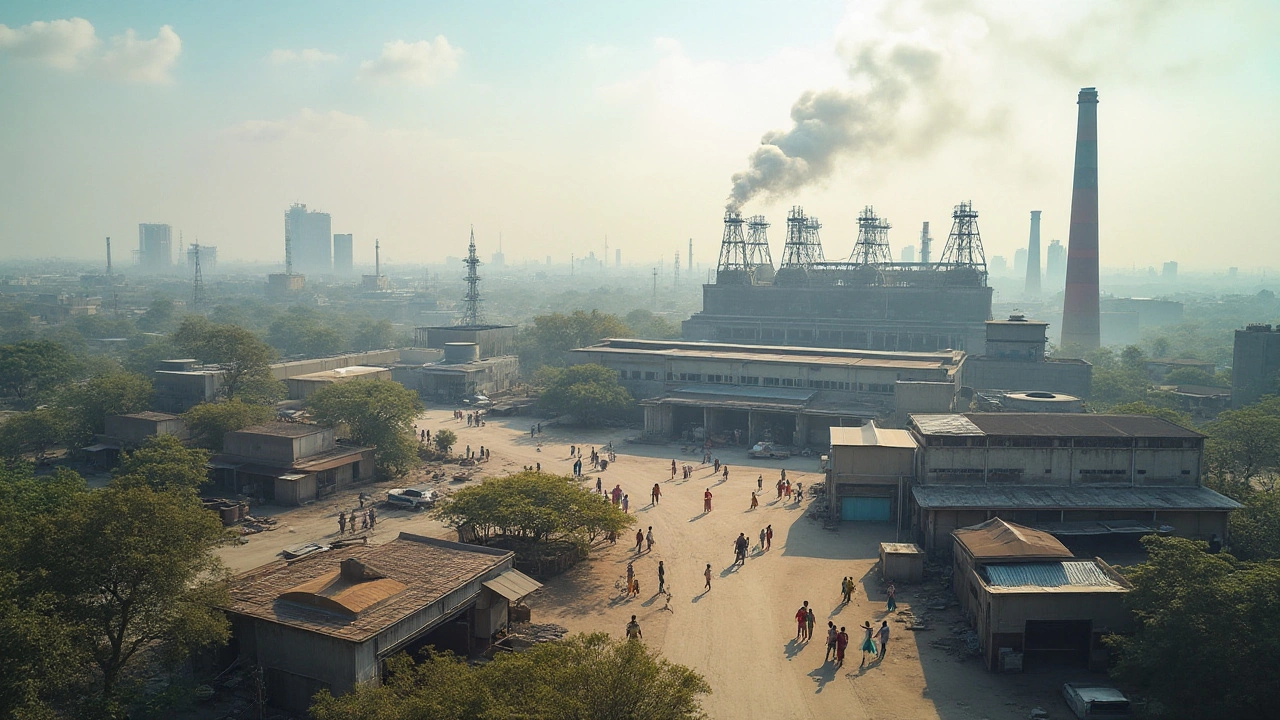Exploring 4P Manufacturing in Government Schemes

The concept of 4P manufacturing is gaining significant traction within government circles, particularly as it relates to economic development and industrial growth schemes. This model emphasizes four crucial elements: Product, Process, People, and Place, which together create a harmonious ecosystem for manufacturing success.
Understanding how each 'P' interacts and contributes to the manufacturing landscape can offer industries a competitive edge. By fostering innovation and collaboration, 4P manufacturing has the potential to transform traditional practices into more efficient and sustainable ones. As governments worldwide advocate for these principles, embracing the 4P model is becoming increasingly important for industries that want to stay ahead in a rapidly changing world.
- Understanding the 4P Framework
- Government Initiatives Supporting 4P
- Impact on Industry and Innovation
- Sustainability and Future Prospects
Understanding the 4P Framework
The concept of the 4P manufacturing framework has its roots deeply embedded in the crafting of efficient and holistic production processes. At its core, this model revolves around four primary pillars: Product, Process, People, and Place. Each component interlinks with the others, forming a cohesive strategy that can propel industries towards greater efficiency and adaptability. The 'Product' aspect is about creating goods that meet market demands while ensuring quality. Companies that focus on innovative product design often lead market trends and set new standards. This requires an agile approach and a commitment to continuous improvement.
The 'Process' component is integral to manufacturing, as it forms the backbone of production. Streamlining methods and embracing automation and technology can significantly increase efficiency. A well-optimized process minimizes waste, reduces costs, and often leads to higher quality outputs. Modern factories are increasingly turning to advanced technologies such as AI and IoT to capture data and refine their processes.
A leading industrial expert once noted, "Embracing sophisticated process solutions not only fosters growth but future-proofs the industry against market volatility."
'People' power is the heart of any manufacturing endeavor. Skilled workers bring ideas to life, and their expertise and adaptability can make or break an industry. Investing in workforce development and aligning talent with industry needs ensures that the human element of the 4P manufacturing model does not lag. Governments are proactive in creating programs that enhance skills, aiming to create a workforce that's attuned to the technological advancements and evolving market demands.
'Place' as a concept pertains to the manufacturing hub's strategic positioning. It involves geographic, economic, and infrastructural aspects that significantly impact manufacturing outcomes. Proximity to raw materials, supportive local policies, and connectivity to markets are all considered. In the digital age, 'place' also implies the optimization of digital spaces and virtual processes. Many industries find that the strategic choice of location can substantially reduce operational costs and enhance access to markets.
To visualize the interactions and balance among these 'P's, some companies use scorecards or balanced dashboards. These tools help prioritize initiatives that drive substantial returns on investment and align with sustainability goals. According to recent statistics, companies that institute a balanced approach to the 4P framework see an average of 20% improvement in operational efficiency within two years.

Government Initiatives Supporting 4P
In recent years, governments have acknowledged the transformative potential of 4P manufacturing frameworks to bolster their national industries. This realization has led to a series of initiatives designed to encourage the implementation of 4P concepts in production processes. These initiatives are centered around providing financial support, regulatory guidance, and infrastructural enhancements to industries willing to adopt these principles.
Countries like Germany with its Industry 4.0 vision, and the United States' Manufacturing USA initiative, lead this wave by setting benchmark standards. Through these programs, governments offer subsidies and tax breaks to companies enhancing their manufacturing capabilities by integrating advanced technologies and practices. The emphasis on sustainability within the 4P model aligns with global UN Sustainable Development Goals, marrying economic growth with environmental stewardship. "Manufacturing is the backbone of our national economy, and the adoption of modern manufacturing practices is pivotal," remarks a noted economist, emphasizing the strategic importance of government involvement.
In many nations, there are specific laws and guidelines introduced that aid small and medium-sized enterprises (SMEs) in transitioning to 4P manufacturing. By creating special economic zones and developing smart manufacturing hubs, governments ensure that businesses have access to the necessary infrastructure. These hubs serve as incubators for new-age manufacturing startups, fostering a culture of innovation and collaboration among key industry players. By assigning grants dedicated to research and development within these domains, authorities propel industries towards cutting-edge advancements.
There's also a clear push towards digitization under many of these government initiatives, recognizing the 'Process' aspect of the 4P. Efforts are made to train workforces in digital skills, ensuring that 'People' remain at the forefront of this transformation. Funding for technical education and apprenticeship programs provide the future workforce with the skills they need to thrive in a new manufacturing landscape.
Government schemes supporting 4P manufacturing often include partnerships with academic institutions to foster research collaborations and innovation. This not only boosts the 'Product' and 'Process' aspects but also revives local economies by attracting foreign investments. The integration of academia ensures a fresh influx of ideas and a foothold for groundbreaking research, pushing industries towards excellence. Such initiatives reflect the realization by governments that acknowledging and fueling these factors is essential for economic resilience and competitiveness on a global scale.

Impact on Industry and Innovation
The advent of the 4P manufacturing model has reshaped the landscape of industries, ushering in a new era of innovation and efficiency. This model intricately weaves together Product, Process, People, and Place, creating a fertile ground for industries eager to leap into the future. It encourages companies to not only focus on what they make but also on how they make it, who makes it, and where it is made. Such focus has led to significant improvements in production lines, reducing wastage and enhancing output quality. With governments backing this approach, industries find themselves compelled to innovate, driving a competitive edge in the global market.
One of the striking impacts of the 4P model is its profound influence on fostering sustainable manufacturing practices. As industries adopt eco-friendly processes, the emphasis on 'Product' and 'Process' within the 4P framework pushes them towards using renewable resources and reducing carbon footprints. Initiatives like these have gained support from policies that encourage green manufacturing incentives, creating a ripple effect that heightens innovation across sectors. The model ensures industries prioritize sustainable development, making them adaptable to ever-changing environmental regulations.
Moreover, the integration of the 'People' element in 4P manufacturing highlights the importance of human capital in driving innovation. By investing in skill development and fostering a culture of continuous learning, companies can unlock the potential of their workforce. Governments have recognized this and have introduced various schemes aimed at enhancing workers' skills to align with technological advancements. When employees are valued and trained effectively, innovation flourishes from the ground up, as unique ideas and approaches come to light that might otherwise remain dormant.
Another critical facet is the 'Place', which has transformed how industries choose their production sites. With a keen eye on logistics, supply chain efficiencies, and accessibility to markets, industries are strategizing their locations to gain maximum advantage. This shift in approach is evident in regions where clustering of businesses in manufacturing hubs has led to increased cooperation, sharing of resources, and a thriving ecosystem of innovation. Such hubs often facilitate deeper collaboration between industries and government, elevating the growth potential exponentially.
To witness the tangible impacts of 4P manufacturing, let's consider a quote:
"The integration of 4P strategies has enabled us to innovate not just in what we produce, but in how we envision the entire manufacturing landscape." – A senior executive from a leading manufacturing firm.This approach not only promises technological advancement but also propels industries towards creating smarter, more resilient manufacturing processes that can withstand the pressures of a volatile global market.
Statistically, sectors that have embraced this model show a remarkable increase in productivity and innovation indices. According to recent data, industries applying the 4P framework have experienced a 25% increase in production efficiency and a significant reduction in production costs. Such figures illuminate the path forward for manufacturing sectors globally, encouraging a robust uptake of 4P practices as industries strive to remain competitive while addressing the demands of modern society.

Sustainability and Future Prospects
As the world pivots towards more environmentally conscious manufacturing practices, the 4P manufacturing framework offers a comprehensive model for sustainable development. Central to this model is the focus on efficient resource use, waste reduction, and minimizing environmental impact. By emphasizing the development of sustainable products and processes, industries can significantly lower their carbon footprint. For instance, incorporating renewable energy solutions and adopting circular economy principles becomes far easier within this framework. This shift not only benefits the planet but also results in cost savings and boosts a company's market reputation.
The integration of sustainability into the 4P manufacturing model is not just an ethical choice but increasingly becoming a business imperative. Advanced technologies like AI and IoT are being leveraged to monitor energy consumption, streamline supply chains, and optimize production methods, paving the way for more intelligent and sustainable operations. In fact, a report from the International Energy Agency indicates that smart manufacturing processes can reduce industrial emissions by up to 40%. Such advancements highlight the enormous potential for long-term gains both environmentally and economically.
"Sustainable manufacturing processes are not just environmentally sound but are integral to future-proofing industries against market shifts," comments renowned sustainability advocate, Jane Goodall.
Moving forward, government policies worldwide are expected to increasingly support these sustainable initiatives through incentives, tax breaks, and grants aimed at encouraging businesses to innovate green technologies. For those industries willing to adapt, the opportunities are vast. This not only involves rethinking product design and production pipelines but also considering the human element—ensuring that workforces are skilled in new technologies and practices. A holistic approach will undoubtedly strengthen the socioeconomic fabric by creating green jobs and fostering community development around cleaner industrial practices.
In essence, embracing 4P manufacturing is not merely about adjusting strategies but transforming them to meet future needs. Success in these endeavors requires embracing collaboration and innovation while being mindful of resource constraints. As such, industries that pioneer these sustainable pathways will likely lead in market competition, offering products that resonate with the values of modern consumers. The path forward is indeed promising, and those who engage with it will shape the industries of tomorrow.